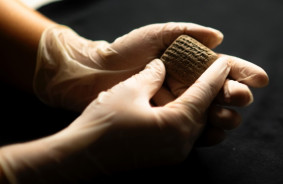Researchers have determined that the famous Egyptian mummy, known for its contorted face, actually died in agony rather than due to the negligence of embalmers.
The Metropolitan Museum expedition discovered the mummy in 1935 inside a wooden coffin beneath the tomb of Senmut Senmut was one of the prominent architects of ancient Egypt in Deir el-Bahari, at the site of ancient Thebes. The mummy was adorned with a black wig and gold and silver rings, but what stood out most was its expression, featuring an open mouth and a twisted jaw.
Senmut was one of the prominent architects of ancient Egypt in Deir el-Bahari, at the site of ancient Thebes. The mummy was adorned with a black wig and gold and silver rings, but what stood out most was its expression, featuring an open mouth and a twisted jaw.
In 2020, Zahi Hawass and Sahar Salim studied the 3,000-year-old mummy and concluded that the ancient Egyptian woman died from a heart attack. The researchers suggested that her dying agony was captured during the embalming process.
A new article, published in the journal Frontiers in Medicine, supports these conclusions. Sahar Salim, the lead author of the study, explains:
“In Ancient Egypt, embalmers made sure that the body appeared beautiful for the afterlife. Therefore, they typically closed the deceased's mouth by tying the jaw to the head.”
Salim's team found traces of expensive embalming materials on the body’s surface, indicating meticulous attention during the mummification process. The scientists speculate that the woman may have experienced cadaveric spasm—a rare form of muscle rigidity before death. It’s possible that the embalmers began their work before her muscles had relaxed, which preserved her dying expression.
A 2013 study published in The Lancet showed that 34% of mummies from that era exhibited signs of cardiovascular disease. By comparison, in 2022, about one in five deaths was related to heart disease, according to data from the CDC Centers for Disease Control and Prevention.
Centers for Disease Control and Prevention.
Not all experts agree with the study's conclusions. Gregory Thomas, a cardiologist at the University of California, Irvine, notes:
“The most likely reason for the mummy CIT8's ‘scream’ is that its mouth was not closed during the embalming process.”
Sahar Salim suggests that further research on mummies with similar facial expressions and a more in-depth investigation into cadaveric spasm in forensic contexts is necessary for a complete understanding of this phenomenon.
Source: Gizmodo














Comments (0)
There are no comments for now